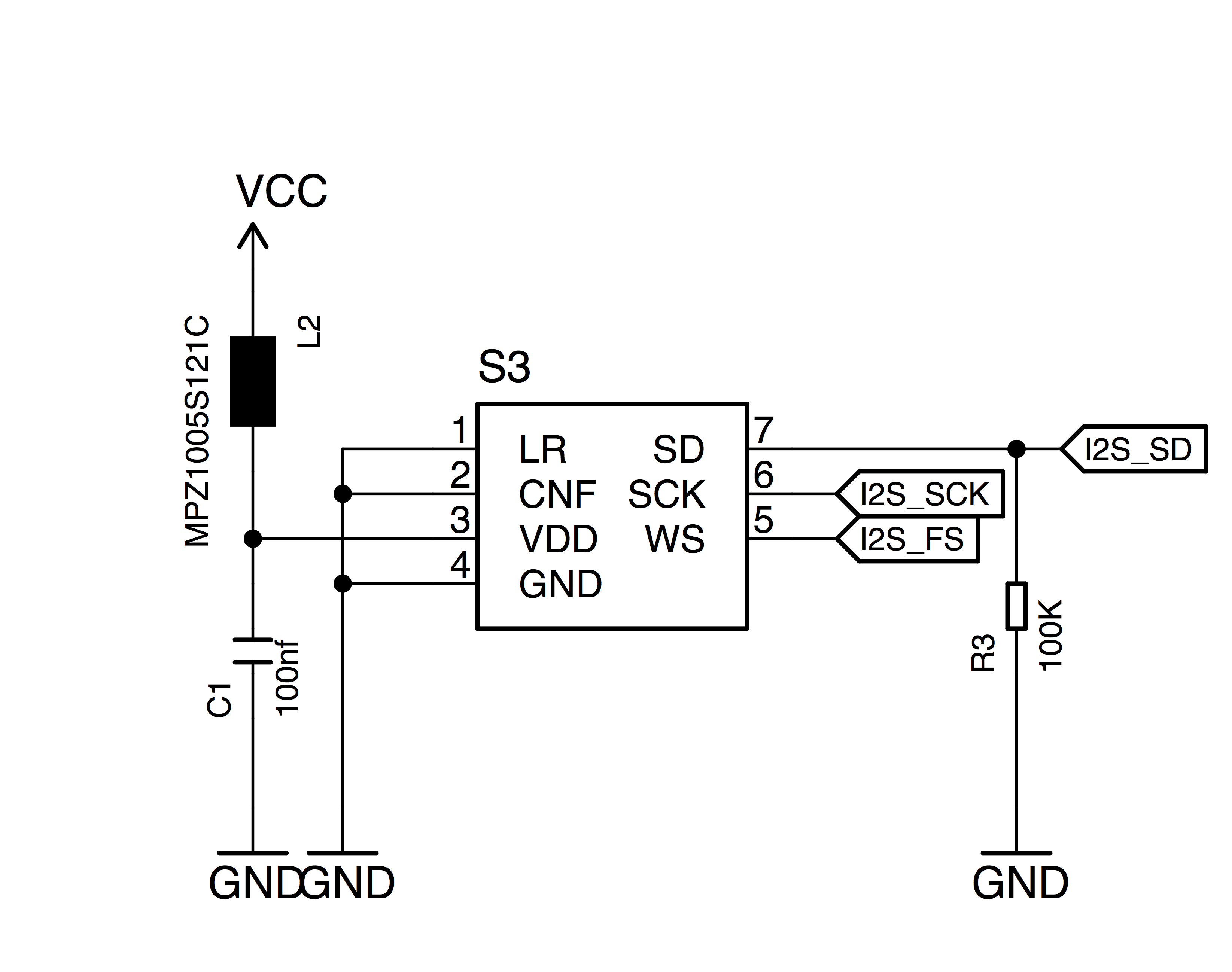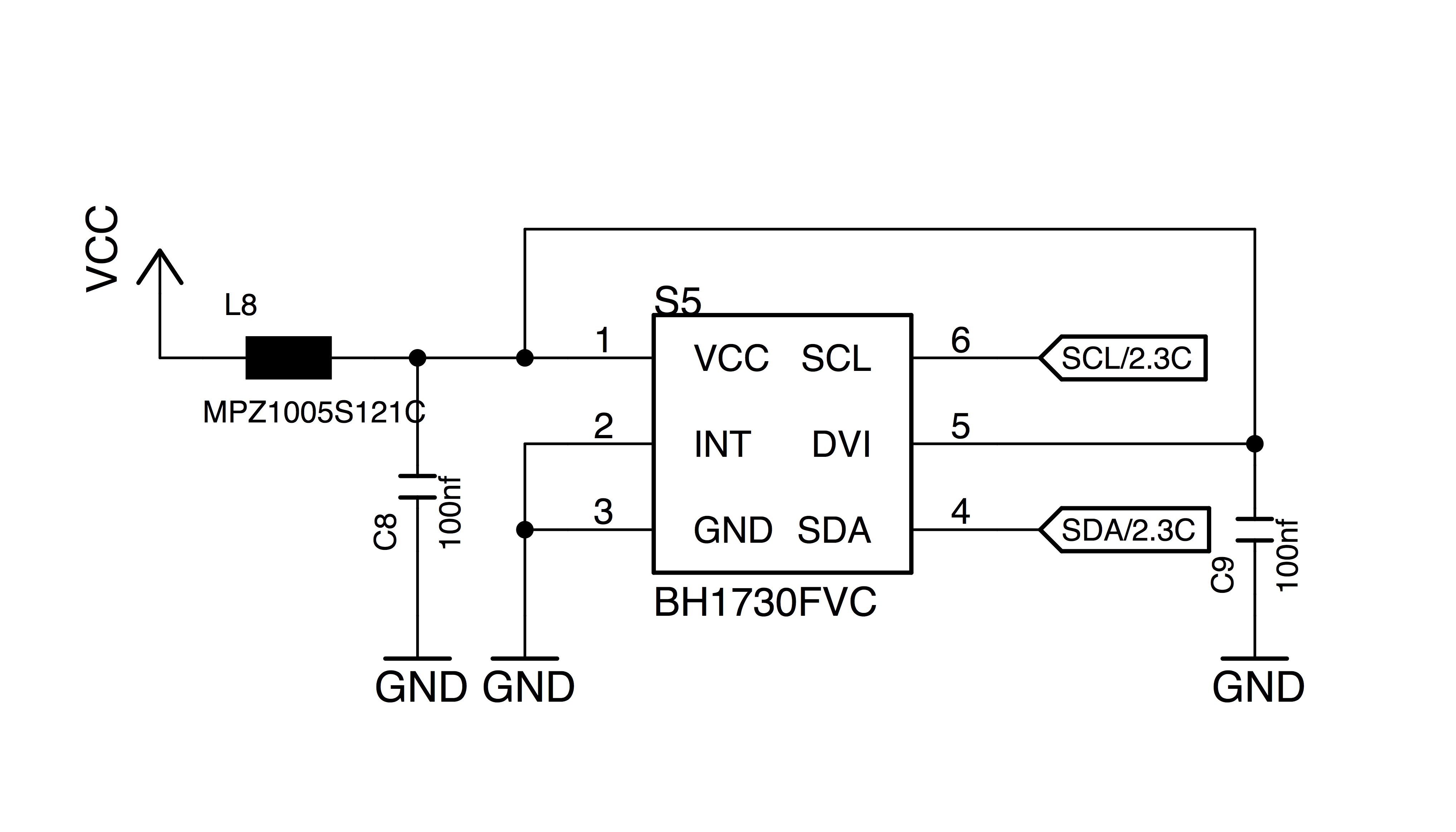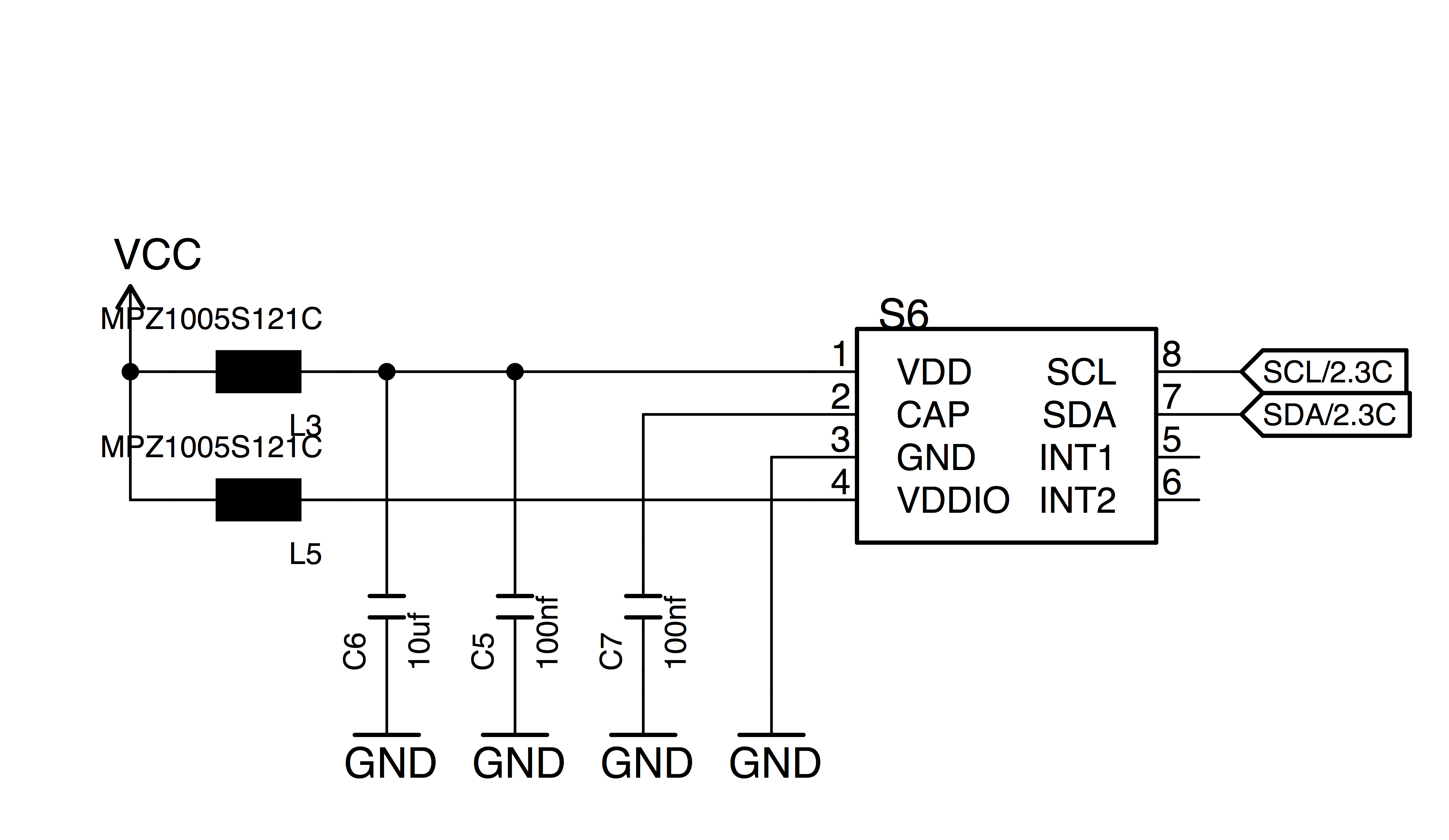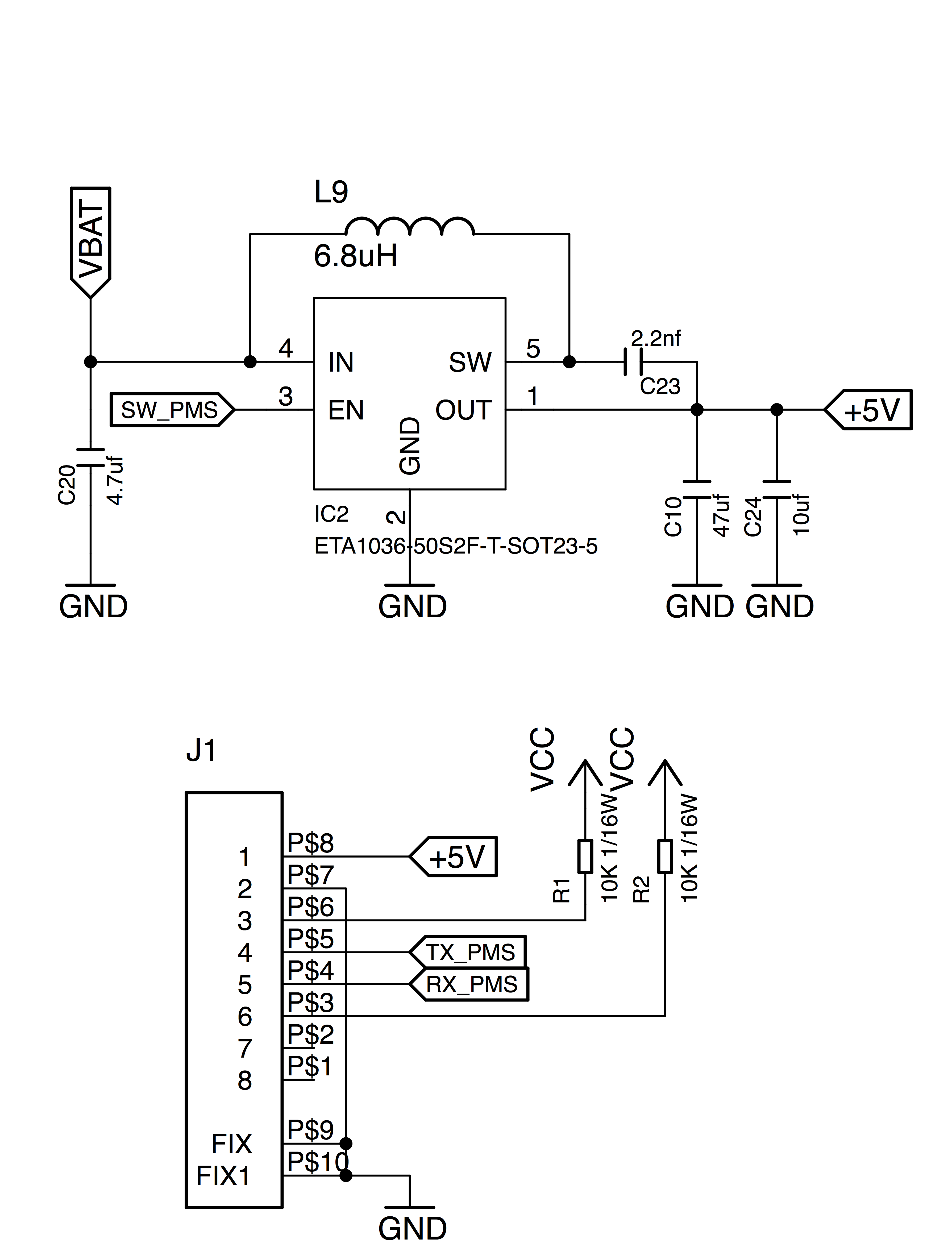Sensor performance summary¶
Metal Oxyde Sensors¶
The metal oxyde sensors section is so extense, that we decided to dedicate a full section to them. Have a look at it here!
What are normal values?
More on the AMS CCS811, eCO2 and TVOC
Noise Level Sensor¶
Version
This sensor is supported from V2.0 onwards
The noise sensor is based on the INVENSENSE ICS-434322 high-performance, low power, digital output, omnidirectional MEMS microphone with a bottom port and I2S interface. The sensors are similar to the one found on some high-end smartphones. It delivers the information directly in a digital format to the MCU where a custom library has been developed to provide noise data in dB scales A, C and Z. The raw FFT is also accessible to support characterization of specific noise frequencies. The sensor has been calibrated specifically for the project on an anechoic chamber using standard microphone calibration procedures.
The following characteristics have been considered for the sensor choice
- High 65 dBA SNR with a −26 dB FS Sensitivity
- Low Sensitivity Tolerance ±1 dB
- Wide Frequency Response from 50Hz to 20kHz
- High Acoustic Overload Point 116 dB SPL
- Low Power
Info
Check the Noise sensor implementation full documentation and the performance evaluation in the ISCAPE 7.8 Deliverable (section 6.1)
Sensor integration

Relative Humidity and Air Temperature Sensor¶
Version
This sensor is supported from V2.0 onwards
Relative Humidity and Air Temperature Sensor are provided by a SENSIRION SHT313 module.
Sensor upgrade
Preliminary tests during the project shown a absolute calibration issues affecting the previously selected sensor, the SENSIRION SHT31. Those we updated the sensor to the newest SHT 31 with a PTFE layer for protection obtaining better results.
The following characteristics have been considered for the sensor choice
- Calibrated, linearized sensor signals in digital, I2C format straight to the MCU where data is provided in degrees Celsius and Relative Humidity.
- Wide measurement range with high resolution. The relative humidity range of 0-100% RH with a 0.03% resolution and a repeatability of 0.1%, together with a temperature operating range from -40 to +125°C with a temperature resolution of 0.01 ºC and a repeatability of 0.1%.
- No need for calibration and long-term stability.
- Low power consumption
- Commonly found in many commercial weather stations as the Davis Vantage Pro.
Sensor integration

Ambient Light Sensor¶
Version
This sensor is supported from V1.5 onwards
The Ambient Light Sensors is based around the ROHM BH1721FVC4 which uses an LDR10 combined with an ADC and the corresponding circuit that allows communicating with the device with the I2C protocol.
The following characteristics have been considered for the sensor choice:
- No need of external ADC or linearization circuits uses the well-known I2C protocol
- Measures ambient light data in a wide range from 1lx to 65528 lx a repeatability of 15% and a resolution of 8 lx.
- Possibility to adjust by an I2C command the kind of light that it should measure (visible or infrared).
- Low power consumption.
- 50Hz/60Hz (electric network frequency) light rejection. Filtering the interference of most artificial light sources.
Sensor integration

Barometric Pressure¶
Version
This sensor is supported from V2.0 onwards
The Barometric Pressure sensor is based around the NXP MPL3115A25 is a compact, piezoresistive, absolute pressure sensor with an I2C digital interface.
The following characteristics have been considered for the sensor choice:
- Wide operating range of 20 kPa to 110 kPa.
- Temperature compensated utilizing an on-chip temperature sensor.
- No need for an external ADC or linearization circuits. The pressure and temperature data is fed into an internal high-resolution ADC to provide fully compensated and digitized outputs for pressure in Pascals and temperature in °C using the well-known I2C protocol
- Barometric pressure is also processed by the MCU as height above mean sea level (AMSL) helping to determine the location of the device.
- Low power consumption.
Sensor integration

PM Sensor¶
Version
This sensor is supported from V2.0 onwards
An external connector on the board supports the connection of a Plantower PMS 5003 or PMS 70037. The device is a digital particle optical counter sensor that uses the laser scattering principle to obtain the number of suspended particles in the air. The sensor can be fully enabled or disabled in software to save energy when not in use.
The following characteristics have been considered for the sensor choice (see more in sensor considerations):
- Provides PM1, PM 2.5 and PM10 measurements in ug/m³
- Minimal distinguishable particle diameter of 0.3 um
- No need for external ADC or linearization circuits. The sensor includes an internal MCU capable of dealing with all the light emitting and sensing processing. All the communication is done using the I2C protocol. A dedicated driver has been designed for this.
- Ultra Low Cost when compared to other commercial solutions with similar performance
- Low Power
Sensor integration

CO2 NDIR Sensor¶
Version
This sensor is supported from V2.1 onwards
Done with a CO2 NDIR sensor from Sensirion's SCD308. The sensor also features a Sensition SHT31 for T/H measurements and can be connected to the I2C bus via the auxiliary grove port.
- CO2 measurement range: 0 - 40'000 ppm
- Accuracy: ± (30 ppm + 3% MV) - (25 °C, 400 - 10'000 ppm)
- Repeatability: 10ppm
- Temperature stability: 2.5 ppm / °C (0-50 °C)
- Response time (t63): 20s
Calibration
Make sure to check the sensor calibration guide for this sensor.
Electrochemical sensors¶
Version
This sensor is supported from V2.1 onwards
We currently support electrochemical sensors from Alphasense Ltd. with a digital interface Analog Sensor Board that can operate at 3.3V or 5V. The basic data postprocessing that is specified in Alphasense Application Note 803_04 is implemented as a default processing for these sensors and that we can trigger automatically.
Other sensors can be used, such as SPEC Sensors, with the same hardware (note that these sensors operate at 3.3V). The process is now been worked on in this thread in our forum and will be integrated in the basic data postprocessing as with Alphasense sensors to be triggered automatically.
The sensors that are currently supported are:
-
Alphasense Sensors: CO, NO2, NO, OX, SO2, H2S, both in A or B-Series. These sensors are affected differently by temperature and humidity (some of them are by both, some of them are not). It is important to consider cross-sensitivity of the sensors in this case, for instance:
- OX sensor is affected by NO2 and O3
- SO2 is affected by SO2 and O3
-
SPEC Sensors - WIP: CO, NO2, SO2, O3, H2S
Source files¶
-
SGX MICS 4514 Technical Datasheet
https://sgx.cdistore.com/datasheets/sgx/0278_Datasheet%20MiCS-4514%20rev%2017.pdf ↩
-
INVENSENSE 43432 Technical Datasheet
https://www.invensense.com/wp-content/uploads/2015/02/ICS-43432-data-sheet-v1.3.pdf ↩
-
SENSIRION SHT31 Technical Datasheet
https://www.sensirion.com/fileadmin/user_upload/customers/sensirion/Dokumente/2_Humidity_Sensors/Datasheets/Sensirion_Humidity_Sensors_SHT3x_Datasheet_digital.pdf ↩
-
ROHM BH1730 Technical Datasheet
http://rohmfs.rohm.com/en/products/databook/datasheet/ic/sensor/light/bh1721fvc-e.pdf ↩
-
NXP MPL3115A2 Technical Datasheet
-
MAXIM 30105 Technical Datasheet
-
PLANTOWER PMS5003 Technical Datasheet
Also in https://aqicn.org/air/view/sensor/spec/pms5003.pdf ↩
-
Sensirion SCD30 Technical Datasheet
https://files.seeedstudio.com/wiki/Grove-CO2-Temperature-Humidity-Sensor-SCD30/res/Sensirion_CO2_Sensors_SCD30_Datasheet.pdf ↩